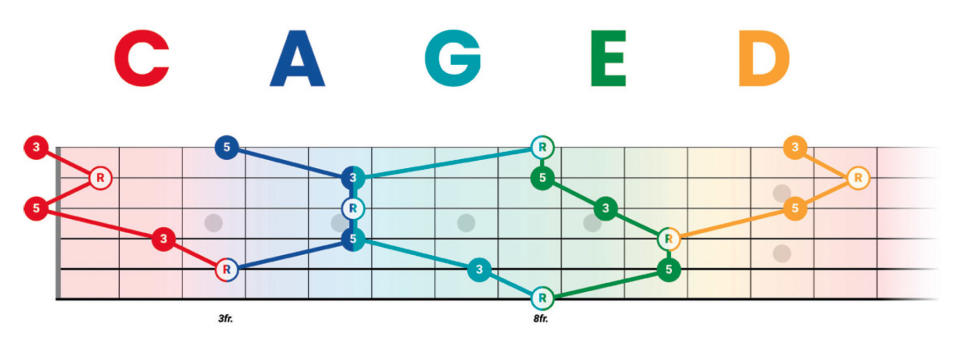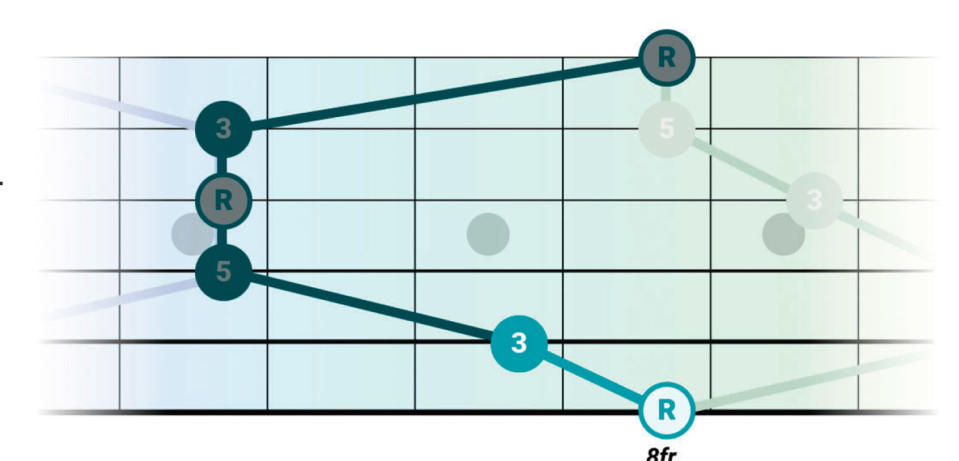You don’t need to bury your head in books to decipher the secrets of the fretboard – you can learn the CAGED guitar system in just 10 minutes

It’s no secret that a lot of guitarists shy away from music theory. Let’s face it, most of us want to have fun when we grab our guitars, not make our brains hurt. Luckily, you don’t need to bury your head in wordy books to decipher the secrets of the fretboard.
The CAGED system is a foolproof way to understand the musical relationships between notes, chord shapes and scale patterns, and this lesson from Pickup Music makes learning the basics a piece of cake. There’s a companion video lesson, too, so if you want some musical backing for the exercises, load it up and jam along.
We’ll start with a quick overview of the CAGED system for those who don’t know it. You take the five basic open chord shapes (C, A, G, E and D) and connect them together along the fretboard. Just like our well-known barre chords, these shapes can be moved around the neck and all five shapes neatly fit together.
1. How many ways can you play a C chord?

Guess what? Every shape on this diagram is a C chord! It can be tough to spot the patterns at first, so read on and we’ll break them down for you. Note that ‘R’ denotes a root note, ‘3’ is a 3rd interval and ‘5’ is a 5th. We’ll let you work out which fingers to use!
2. Shapes you know

You probably already know the open C (shown in red), and the ‘A shape’ (blue) and ‘E shape’ (green) barre chords. That’s three out of five already. G and D fill those gaps.
These two shapes aren’t commonly used – they’re a bit awkward to play and usually better options are available. But it’s still important to learn them to give us a full map of the fretboard.
3. Exercise 1: Strum the shapes


Time to get comfy playing through each shape in order: C, A, G, E and D. Make life easier by splitting that awkward G shape into two. And for the D shape, just play the little triangle section around the 12 fret. Don’t worry about the root note if you can’t reach it.
Important! Your aim here is to develop fretboard visualisation, not just muscle memory. Make this your main focus, more than playing the shapes. Jump to 5:50 in the video to play along with Molly.
4. Exercise 2: Play the root notes

The CAGED system, like every good map, has markers for important places – and root notes are our landmarks for chord and scale shapes. There is always at least one root that crosses over between shapes. For example, the C and A shape share a root note at the 3rd fret of the A string.
Study the fretboard diagram, see where the root notes are in each shape and how they connect and use these as anchor points. Follow the video from 7:00 for a deeper explanation and play-along section.
Get access to the world’s best online guitar courses and reach your guitar goals with structured lessons and personalised feedback from pro instructors. Pickup Music even offer a 14-day free trial so you can take a look before you buy.

